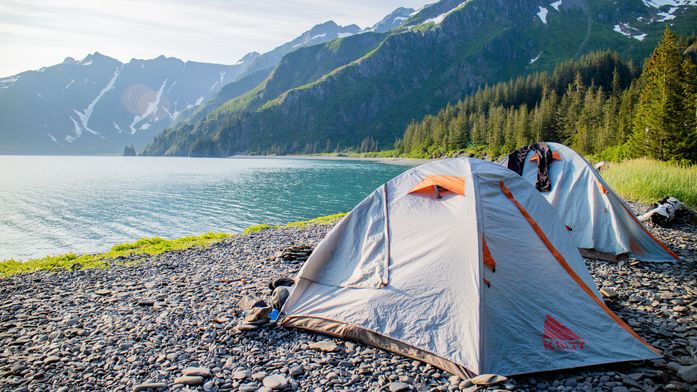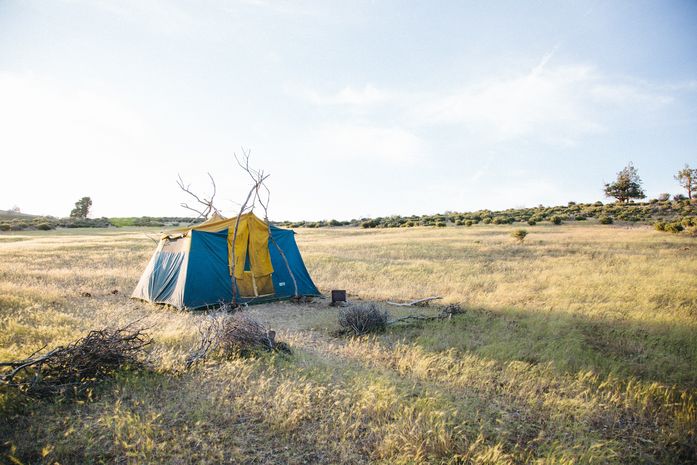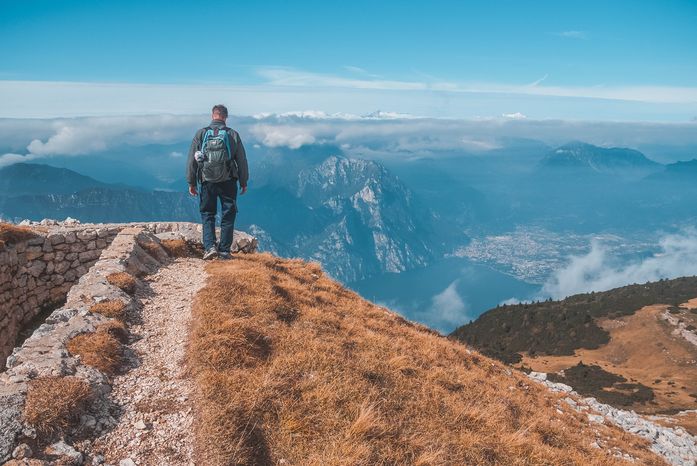A tent is the first thing you need to consider when planning backpacking. This guide will give you a sneak peek into the best backpacking tents for 2023 to enable you to make the right decision when purchasing.

The best backpacking tent for 2023 has to be compact and easy to carry, like the one above.
Tents come in different shapes and sizes and for different seasons. Backpackers in winter, for example, will consider additional factors while shopping for tents. The information will help you make the right choices as you gear up for the backpacking experience.
We will take you through a step-by-step procedure on choosing the best backing tent and provide viable suggestions based on quality and customer reviews.
How to choose the best Back Packing Tents for 2023
The choice of a tent is the most critical decision you will ever make in your backpacking journey. The tent you settle on will affect the weight of your backpack’s weight and your budget. You will also find thousands of variations in the market and might not know what to settle on.
The following are a few pointers that will guide you when shopping for a tent.
Your favorite hiking season
Seasons are a significant factor to consider when purchasing a backpacking tent. The best tent should serve you across all seasons, but it comes at a higher cost. Summer hikes are the most affordable.
If you are an adrenaline junky, meaning you always go for greater challenges, you will find yourself hiking in winter more often. In this case, you need a four-season backpacking tent, such as the Coleman Sun dome camping tent (View here)
A strong and durable tent will serve you for a long time and protect you from the elements. Manufacturers use the best quality materials, which are also lightweight. The convenience comes at an extra cost.
There are cheaper options in the market made from cheap canvas can be too heavy for thru-hikers and mountain climbers.
Short-term and short-distance hikers can get the more affordable variation. Still, professional hikers must invest in quality, or they might end up buying a new tent for every trip.
Besides the material, the shape of the tent also determines its suitability for different seasons. A dome-shaped tent, for example, can go into any weather, while a cabin tent will not be ideal for winter camping.
The Tent’s Capacity

A camping tent that can fit a group of 4 to 6 persons
The best backpacking tents for 2023 must have enough space to accommodate you and your belongings. Tents come in different shapes and sizes, and you will need to decide depending on the number of occupants, your height (yes, this is an important factor), and how much stuff you intend to store inside the tent.
Living space is essential to look out for in a tent, but it is also the most challenging to determine. The wall geometry is the most important to look out for when considering the size of a backpacking tent.
The first thing you should consider is the floor dimensions. A standard backpacking tent should provide approximately a width allowance of 25 inches per person and 80 inches in length.
The other important factor is the number of occupants. Tents are classified as per their sleeping capacity: single-occupant tents, two-person tents, and so on.
The tent’s height is also necessary but not the most crucial factor, as you do not need to walk around in the tent that often. High-roof tents provide better air circulation and work best for the warm seasons.
Weight

A backpacker with compact and easy-to-carry luggage
I know you have heard the phrase ‘light is always right. This statement is more applicable to hikers and backpackers because no one wants to be on the trail with a tonne or more luggage, as it will make your life miserable.
When buying a tent, there is no guarantee that the lighter it is, the better. You need to strike a balance between weight and durability, especially if you plan to stay there for extended periods. You do not want your tent to tear apart when you still have so many days left.
When hiking alone, the best backpacking tent should weigh about 2.5 pounds. You can bring a heavier one when you are sharing because you will distribute the luggage so that the canvas, poles, and rain fly into different backpacks.
You may need to note that lightweight tents are not necessarily cheaper. The contrary is true; the lighter tents are more costly despite having little interior space, among other compromises.
Before making the purchase, assuming you are a hiking and backpacking beginner, you must consider whether it is a long-term activity. If you intend to tick an item off the bucket list and move to other things, you can settle for an affordable tent that will serve its purpose right.
Are you a casual or professional backpacker?
While shopping and budgeting for the most appropriate backpacking tent for 2023, you must consider your hiking and backpacking habits. Do you hike for fun, or is it for a course? How long do you intend to be out there? (Are you a thru-hiking?).
This trail of thought will help you determine the best backpacking tent and how much you need to invest.
You have to put in mind that price and quality are inversely related. A tent can make or break your backpacking adventure because you cannot sleep in a worn-out tent in the middle of a desert. You may need to find your way back before completing the escapade.
High-quality tents such as the Gear Top 4 season backpacking tent (click here) can serve you for several seasons before wearing out. You need to clean and dry it well before folding it into its bag and store in readiness for the next adventure.
The best backpacking tents for 2023 should be lighter, especially for long-distance trekkers. High-quality tents are also lightweight and relatively expensive.
Buying a new tent each time you go hiking and backpacking is equally expensive; hence you need to consider which of the two is the best option.
Ventilation and weather protection
A good tent must protect you from the elements and allow proper air circulation while protecting you from rain and small flying insects such as mosquitoes.
Ventilation is specifically pertinent during summer since you need good air circulation to keep the tent warm. We highly recommend a removable rainfly tent, such as the lightweight MSR backpacking tent (click here).
The other best alternative is a double door which will give you the luxury of deciding which door to open, depending on the wind direction. Also, too much wind getting into the tent can cause destruction.
Product Reviews
Hillman 3-4 Season 2 3-person lightweight back Packing Tent

Hillman 3-4 Season 2 3-person lightweight back Packing Tent
Featherstone Backpacking Tent lightweight for 3- Season

Featherstone Backpacking Tent lightweight for 3- Season
Clostnature Lightweight Backpacking Tent

Clostnature Lightweight Backpacking Tent
Core Tents for family Camping, Hiking, and Backpacking

Core Tents for family Camping, Hiking, and Backpacking
Conclusion
From these products’ reviews, we highly recommend the Hillman 3-4 Season 2 3-person lightweight back Packing Tent.
You can use this tent for winter hiking which is the harshest season for backpackers. If you are not specific with your backpacking season, this is your ideal tent since you will not need to buy a different one for the different seasons of the year.
The four-season tent is durable, making it relatively affordable despite the initial higher cost. The advantage of a durable tent is that you can use it for years before it wears out. Also, it will not fade if you store it for extended periods.
The weight is reasonable even for a lone backpacker with no partner to share the luggage.
The living space looks reasonable enough for one person to sleep with their luggage or two people without bringing in the bags.

